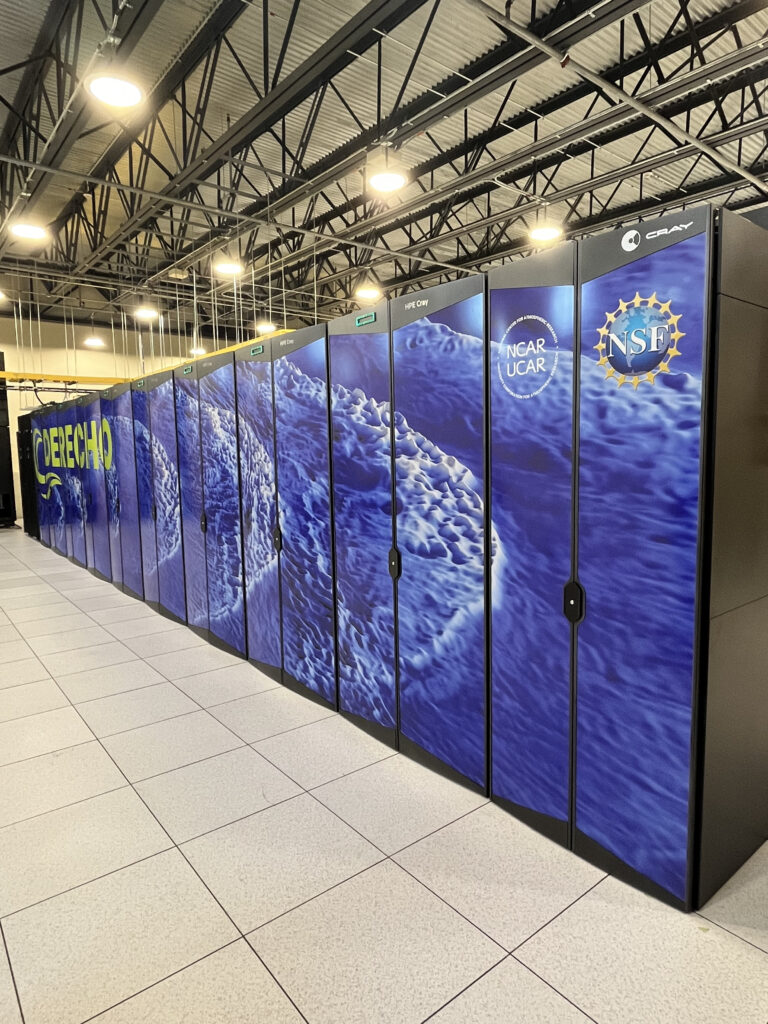Political, science, academic and business leaders have formally inaugurated a new supercomputer at the NCAR-Wyoming Supercomputing Center (NWSC). Derecho will provide researchers across the US with an important new tool to advance understanding of the atmosphere and other Earth system processes.
Derecho is a 19.87-petaflops system, meaning it has the theoretical ability to perform 19.87 quadrillion calculations per second. That is about 3.5 times the speed of scientific computing performed by the previous NWSC supercomputer, Cheyenne. Derecho was built by HPE and cost about US$35m.
Derecho is also the first NWSC supercomputer to include a significant number of graphics processing units (GPUs), with 382 Nvidia A100 GPUs providing 20% of its sustained computing capability. GPUs are more effective than CPUs for newly developed AI and machine-learning techniques because they perform large numbers of computations simultaneously on one accelerator, resulting in lower power use and less hardware for the same number of parallel operations.
Derecho is so energy efficient that it will use only about 40% more electricity than Cheyenne – which is itself highly energy efficient – despite being 3.5 times faster. This is partly because GPUs deliver up to six times more performance (as measured by floating-point operations) per watt of energy than CPUs.
High-performance computers such as Derecho enable researchers to run increasingly detailed models that simulate complex processes and how they might unfold in the future. This can include a more complete picture of the Earth system. This type of ensemble modeling enables them to quantify the range of likely outcomes, or uncertainty, of a given event. Ensemble predictions are particularly helpful for providing resource managers and policy experts with valuable information for planning ahead and mitigating risk.
Scientists are starting to use Derecho to study phenomena ranging from wildfires and hurricanes to solar storms. Their findings will help protect society from environmental disasters, lead to more reliable projections of long-term weather patterns, and improve weather and climate predictions that are needed by vulnerable communities and critical sectors of the economy such as agriculture and transportation.
For more on numerical weather prediction, please click here.



